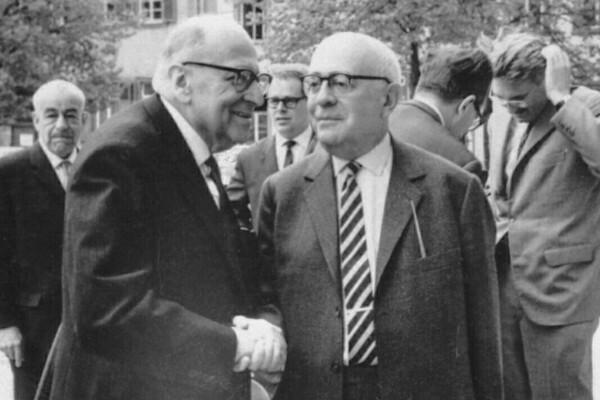THE mass culture it's part of culture in general, which is the most precious good produced by mankind. By culture, we understand a set of habits, customs, religion, language and artistic productions linked to a specific group of people, that is, to a community or society.
Within this frame, we have the authentic culture and the inauthentic culture. Inauthentic culture is mass culture, which is produced on a large scale and serves as an artifice to make turn the capitalist mechanism through profits from cultural production and from the manipulation of the masses, which serves political and commercial interests.
Read too: Material culture and immaterial culture - different modalities of the same concept
what is mass culture
On the horizon of human cultural production, there are artistic forms that seek an end in themselves: making art, promoting art, awakening aesthetic sensations in the viewer. Also on this horizon, there is a phenomenon of 20th century made possible by the mass media: produce an art form that is
nice just for the entertainment and that it doesn't have an end in itself, but in other things, like political power and profit. In this sense, mass culture uses art to do something different from it: move the capitalist mechanism.
Mass culture is not produced but reproduced. The idea here is not to create something authentic, but incessantly reproduce what has already been produced (until the demand for the reproduced object runs out) to be able to reach the largest number of viewers, thus generating a greater profit with less effort and expense. The great Brazilian communicator Abelardo Barbosa, immortalized by his artistic name Chacrinha, launched a phrase that is still circulating in the media: “On TV, nothing is created, everything is copied”.
Ironically, Chacrinha is still copied today. Its irreverent format of presenting a talk show, with jokes, live music, competitions, dancers and flashy sets is still used in Brazilian talk shows. Commercial music, commercial films, even today's fine arts have surrendered to a copy reproduction system.
Mass culture presents itself as the cultural reproduction model which leaves aside what the German philosopher and literary critic Walter Benjamin called the aura of the work of art, to make room for easily accessible, easily “digested” production. of low quality and low intellectual and technical level.
Films with scripts that captivate the viewer for their formula that mixes action, romance and dynamic shots; songs with few chords and poetry poor; reproduced prints that give way to the plastic art produced by the painter, in short, all this can make up the range of objects of mass culture. Mass culture treats people not as individuals, but as a mass that is always looking for the same things.
mass culture and consumption
There is a great deal of research in the area of communication that involves the sociology, psychology and management to discover what is capable of pleasing the general public, which consists of the average spectator of mass culture. Following this line, the producers create easily accessible content to grab these people's attention and dominate them.
Amid the programming offered, on TV, radio, on the internet or at major music shows, there is the insertion of advertisements from sponsors who finance the production and expect, in return, the public search for advertised products.

A car that appears in a commercial, or even in a movie or soap opera, becomes an object of people's desire for having been used by the actor/actress or character. A drink, a food, a clothing brand, in short, any product that appears directly linked to the content presented or indirectly (in an interval ad) is shown in a way that entices the consumer.
The habit of smoking, for example, became very popular in the United States after the spread of Hollywood movies that showed actresses and actors smoking in an elegant and seductive way. Some soft drink and beer brands have become known worldwide for their well-crafted advertisements and incorporation into movies and soap operas.
See too: Brazilian culture - product of the ethnic diversity of Brazil
mass culture and cultural industry
The terms “mass culture” and “cultural industry” were coined by the German Jewish philosophers and sociologists of the Frankfurt School: Theodor Adorno and Max Horkheimer, in the book Dialectics of Enlightenment. This work aims to condense a common vision of thinkers of the so-called first generation of the Frankfurt School: that the enlightenment it failed as a project for the civilized world.
While the Illuminists thought that scientific and intellectual advancement combined with the expansion of access to this knowledge would directly lead to moral and social advancement, the twentieth century experienced the barbarity of burnt offering Jew and the advance of capitalism to the point of arriving at an extremely unequal society. The cultural industry is one that produces mass culture, incorporating all forms of artistic production.
A strong ally of capitalism and totalitarianism in its particular projects of domination it was mass culture, because it is a efficientmeans of mass manipulation. Adorno and Horkheimer realized that there is a formula discovered by the cultural industry to produce their mass art.
This formula would consist of mixing elements of popular culture with the high culture in a simplistic language, with rudimentary techniques, and using the means of technical reproducibility (means of communication through which it is possible reproduce the same element thousands or millions of times, such as photography, cinema, radio, television and the internet) to disseminate the generated content. To learn more about this other fundamental concept of the first phase of the Frankfurt School, visit our text: cultural industry.
mass culture and popular culture
Due to the strong popular appeal of mass culture, there is a tendency to confuse it with the popular culture. However, the two concepts are different. Popular culture is an authentic way of making art, the result of efforts to create a popular layer of society with what is available.
popular culture is traditional culture, often with less technical elaboration, but which aims only at artistic production for the artist's expression. We can elect as examples of popular culture Brazilian country music, samba, graffiti as urban art, literature of twine Northeast, and our popular cuisine.

Term opposite to mass culture is high culture, created by the elites and geared towards the elites. Being born in an environment that has greater access to formal study, high culture tends to be more technically elaborate. We have as an example the music produced by masters such as Beethoven, Bach, Vivaldi and Heitor Villa-Lobos. In the field of visual arts, we have painters like Rembrandt, Van-Gogh, and Portinari (the Brazilian painter who was once frowned upon by the European artistic elites, but which today is considered a classic of art worldwide acclaimed).
in the field of literature and of the dramaturgy, we have the classic writers Miguel de Cervantes, Shakespeare, Victor Hugo and Clarice Lispector (who, being a woman, contemporary and living in Brazil, was considered a minor literati, but who is now recognized as a erudite by the elites). The great Austro-Hungarian writer Franz Kafka was once considered a minor, today he is recognized as a scholar. Closing the account, it is clear that who decides whether an artist or his work is erudite, is the elite.
Mass culture goes against everything that has just been presented. His concern is not with the artwork itself, but with the scope and profit it can generate. What is expected is that the public leaves satisfied and wants more, wants to consume more.
A striking difference between mass culture and popular and erudite cultures is that they last for a long time and are always remembered and revisited, while mass culture has a short shelf life. Soon after being launched and consumed, mass culture is no longer new and must be replaced by another product.
by Francisco Porfirio
Sociology Professor
Source: Brazil School - https://brasilescola.uol.com.br/sociologia/cultura-de-massa.htm
